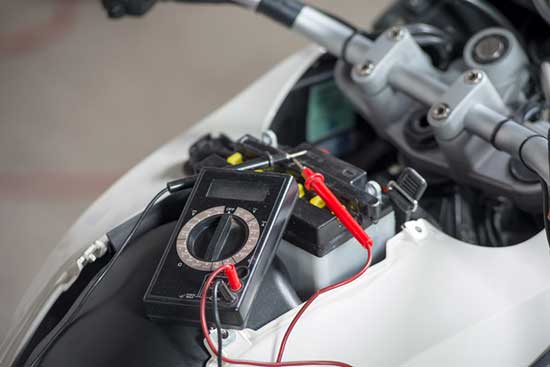Painting dirt bike plastics is an excellent way to customize your ride and make it stand out from the crowd.
You can choose any color or design you like, giving your bike a personal touch that reflects your personality and style.
Protection
Aside from aesthetics, painting your dirt bike plastics also provides an extra layer of protection against dirt, mud, and other debris that could damage your bike’s components over time.
A fresh coat of paint helps shield the plastics from scratches and wear, keeping your bike looking fresh and new.
Contents
Prepping Your Dirt Bike Plastics for Painting
Cleaning
The first step in painting your dirt bike plastics is to thoroughly clean them. Remove any dirt, mud, or grime that may be on the surface using a mild soap and water solution.
Rinse with clean water and allow the plastics to dry completely before moving on to the next step.
Sanding
Once your plastics are clean and dry, it’s time to sand them down. Use fine-grit sandpaper (around 400 grit) to scuff the surface of the plastics lightly.
This step will help the primer and paint adhere better to the surface, ensuring a smooth and even finish.
Priming
After sanding, apply a thin coat of plastic primer to the surface of the plastics. This will create a solid base for the paint to adhere to and ensure the best possible finish. Allow the primer to dry completely before moving on to the painting stage.
Choosing the Right Paint
Types of Paint
There are several types of paint suitable for painting dirt bike plastics, including acrylic, enamel, and urethane. Each type has its pros and cons, so it’s essential to choose the right one for your needs.
- Acrylic: This water-based paint is easy to work with and dries quickly. It’s an excellent choice for beginners and is generally more affordable than other options. However, it may not be as durable as other types of paint.
- Enamel: Enamel paint is oil-based and offers a durable, long-lasting finish. It can be more challenging to work with and requires a longer drying time, but the results are often worth the extra effort.
- Urethane: Urethane paint is a popular choice for automotive applications due to its durability and resistance to UV rays. It’s more expensive than other options and requires a more complex application process, but it provides a professional-quality finish.
Selecting a Color
When it comes to choosing a color for your dirt bike plastics, the possibilities are virtually endless. Consider your style and preferences, as well as the overall look you want to achieve.
Keep in mind that lighter colors may show dirt and scratches more easily than darker shades.
Painting Techniques
Spray Painting
Spray painting is a popular method for painting dirt bike plastics because it’s relatively easy and provides a smooth, even finish.
You’ll need a well-ventilated area, like a garage or outdoor space, and proper safety gear (such as a mask and gloves).
Apply thin, even coats of paint, allowing each coat to dry before applying the next. Be sure to keep a consistent distance from the surface to avoid drips and runs.
Brush Painting
Brush painting is another option for those who prefer a more hands-on approach. This method can be more time-consuming and may require more skill to achieve a smooth, even finish.
Use a high-quality brush designed for the type of paint you’ve chosen, and apply thin, even coats, taking care not to overload the brush.
Airbrushing
Airbrushing is a more advanced painting technique that requires specialized equipment and skills. This method can achieve highly detailed designs and a professional-quality finish, but it’s typically more expensive and time-consuming than other methods.
If you’re interested in airbrushing, consider taking a class or seeking guidance from an experienced artist.
Clear Coat and Finishing Touches
After your paint has dried, apply a clear coat to protect the finish and add a glossy or matte appearance, depending on your preference.
Allow the clear coat to dry completely, then use a fine-grit sandpaper to lightly sand the surface, removing any imperfections or orange peel texture.
Finish by buffing the surface with a polishing compound for a smooth, shiny appearance.
Reassembling Your Dirt Bike
Once your painted plastics are dry and you’re satisfied with the finish, it’s time to reassemble your dirt bike.
Carefully attach the plastics back onto the bike, taking care not to scratch or damage the newly painted surfaces.
Conclusion
Painting your dirt bike plastics can be a fun and rewarding project that allows you to customize your ride and protect it from wear and tear.
By following the proper preparation steps, choosing the right paint, and using the appropriate painting techniques, you can achieve a professional-looking finish that will make your bike stand out on the track or trail.
FAQs
Can I paint my dirt bike plastics without removing them from the bike?
While it’s possible to paint the plastics without removing them, itis not recommended. Removing the plastics ensures a cleaner, more professional result and prevents the paint from getting on other parts of the bike.
How long does it take for the paint to dry on dirt bike plastics?
The drying time for paint on dirt bike plastics can vary depending on the type of paint used and the environmental conditions.
Generally, acrylic paint dries within an hour, while enamel and urethane paints can take up to 24 hours or more to dry. Always follow the manufacturer’s recommendations for drying time.
Can I use any type of paint on my dirt bike plastics?
A: It’s essential to choose paint specifically designed for use on plastics or automotive applications.
Some paints may not adhere well to plastic surfaces or may not be durable enough for dirt bike use.
How can I ensure a smooth, even finish when painting my dirt bike plastics?
To achieve a smooth, even finish, follow these steps:
- Clean and sand the plastics properly before applying primer and paint.
- Use the appropriate primer for the type of paint you’ve chosen.
- Apply thin, even coats of paint, allowing each coat to dry before applying the next.
- Finish with a clear coat and polish for a professional-looking result.
How often should I repaint my dirt bike plastics?
The frequency of repainting your dirt bike plastics depends on how often you ride, the conditions you ride in, and the overall wear and tear on your bike.
If you notice the paint starting to chip or fade, it may be time to consider repainting. However, with proper care and maintenance, a high-quality paint job can last several years.






